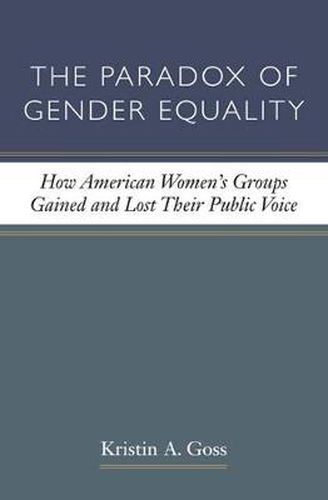Readings Newsletter
Become a Readings Member to make your shopping experience even easier.
Sign in or sign up for free!
You’re not far away from qualifying for FREE standard shipping within Australia
You’ve qualified for FREE standard shipping within Australia
The cart is loading…






Drawing on original research, Kristin A. Goss charts the scope and trajectory of American women’s policy agendas and collective engagement in public policy-making from the 19th-century suffrage movement through the present day. She examines how women’s civic place has changed over time, how the range of issue agendas has shifted significantly and substantively, how public policy has driven change, and why all of these things matter for women and American democracy.
As measured by women’s groups’ appearances before the U.S. Congress, Goss finds that women’s collective political engagement grew from 1920 to 1960 when conventional accounts claim it declined—and declined in later decades when it might have been expected to grow. She suggests that enhanced political inclusion does not necessarily lead to greater political participation and that rights movements do not necessarily constitute the best way to understand the political participation of marginalized groups. She asks what women have gained—and lost—through expanded incorporation and considers whether single-sex advocacy organizations continue to matter.
$9.00 standard shipping within Australia
FREE standard shipping within Australia for orders over $100.00
Express & International shipping calculated at checkout
Drawing on original research, Kristin A. Goss charts the scope and trajectory of American women’s policy agendas and collective engagement in public policy-making from the 19th-century suffrage movement through the present day. She examines how women’s civic place has changed over time, how the range of issue agendas has shifted significantly and substantively, how public policy has driven change, and why all of these things matter for women and American democracy.
As measured by women’s groups’ appearances before the U.S. Congress, Goss finds that women’s collective political engagement grew from 1920 to 1960 when conventional accounts claim it declined—and declined in later decades when it might have been expected to grow. She suggests that enhanced political inclusion does not necessarily lead to greater political participation and that rights movements do not necessarily constitute the best way to understand the political participation of marginalized groups. She asks what women have gained—and lost—through expanded incorporation and considers whether single-sex advocacy organizations continue to matter.